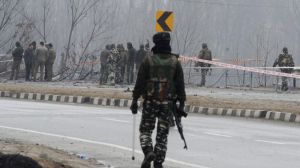US President-elect Donald Trump’s assertion that America’s control over Greenland, an autonomous territory of Denmark, is an “absolute necessity” has reignited a conversation fraught with the complexities of colonial legacy. Trump’s comments earlier this month prompted a strong response from Greenland Prime Minister Mute Egede, who said, “We don’t want to be Danes, we don’t want to be Americans — we want to be Greenlanders.”
For many in Greenland, Trump’s proposal – a reiteration of what he said in 2019 – echoes the island’s colonial past, marked by Denmark’s domination since 1721, and invites a closer examination of its history and America’s renewed interest in the nation.

Greenland and Denmark: A colonial entanglement
Greenland is known as the world’s largest island, characterised by its extreme geographical conditions. While approximately 80 per cent of Greenland is covered by a massive ice sheet, its ice-free coastal areas are comparable in size to Germany.
Story continues below this ad
During the eighteenth and nineteenth centuries, at the height of its colonial power, Denmark maintained a presence in India (1620–1845), Africa (1659–1850), the Caribbean (1672–1917), and the North Atlantic, including Greenland, Iceland, and the Faroe Islands. Greenland’s colonial phase began in 1721 when Danish-Norwegian priest Hans Egede established a mission and started trading activities near what is now the capital, Nuuk.
This colonial dominance gradually waned in the mid-nineteenth century. As Professor Soren Rud notes in his 2017 book Colonialism in Greenland: Tradition, Governance and Legacy, “In 1930, Danish Prime Minister Thorvald Stauning claimed that Greenland was Denmark’s last colony.”
Rud’s research highlights that colonial governance imposed a strict divide between Danes and Greenlanders, manifesting in stark disparities in rights and opportunities. Political, economic, and social inequalities were particularly pronounced. Danes typically occupied superior job positions. Greenlanders were subject to a less formal, culturally adapted legal framework, unlike Danes, who were governed by Danish law. Greenlanders were excluded from voting in elections for the Danish parliament, which held actual political authority over Greenland. Additionally, colonial authorities controlled Greenlandic newspapers, enabling them to influence public discourse.
The US, World War II and the impact on Greenland
While Denmark was under German occupation during the Second World War, Greenland’s administration was overseen by Danish officials based in the United States and Greenland itself. Initially, the United States adopted a cautious approach toward Greenland. Secretly, it discouraged Britain and Canada from occupying the island to safeguard its cryolite mine in Ivittuut, a resource critical for wartime production. However, the US refrained from direct involvement, maintaining its connection to Greenland through the Danish legation in Washington. For the Danes, securing American goodwill was vital — the US was a key ally in the fight against Germany.
Story continues below this ad
In early 1941, mounting pressure from Britain and Canada to establish a military base in Greenland compelled the United States to act. This resulted in an agreement between Denmark and the US, signed on April 9, 1941, which authorised America to construct bases deemed essential for Greenland’s defence. While the agreement reaffirmed Danish sovereignty over both Greenland and the bases, the United States retained jurisdiction over the bases it operated.
By the end of the war, the United States had established 17 stations across Greenland, including four air bases. These developments ended Greenland’s long-standing isolation and marked its emergence as a pivotal player in global geopolitics.
Greenland’s path to autonomy
Greenland’s journey towards autonomy began in 1953 when it became an overseas county within the Kingdom of Denmark, ushering in decades of transformation. Extensive infrastructural development modernised the economy, shifting Greenland from a traditional hunting society to one reliant on wage-earning.
Academics Peter Bjerregaard and Thomas Stensgaard observe in their article ‘Greenland’, originally published as a chapter in the book Health Transitions in Arctic Populations, that the influx of Danes during this period caused a significant demographic shift in the region. The Danish population rose from less than 3 per cent in the 1940s to nearly 20 per cent by the 1970s. This, coupled with rapid modernisation, contributed to a growing sense of insecurity among Greenlanders and dissatisfaction with Danish governance. By the 1970s, calls for Home Rule and greater self-determination gained momentum, paving the way for Greenland’s push toward greater autonomy.
Story continues below this ad
This political awakening culminated in the Greenland Home Rule Act of 1979, which formalised a gradual transfer of authority over most public sectors to Greenland, though Denmark retained control of foreign affairs, defence, and finance.
In the pursuit of asserting its growing identity, Greenland adopted its own national flag on June 21, 1985 — the sun flag. While the Danish flag is still occasionally used, the sun flag is symbolic of the island’s cultural autonomy.
In 2009, following a referendum, Greenland achieved a new level of autonomy under the Self-Government Act. This act expanded upon the limited sovereignty established in 1979, granting Greenland control over additional policy areas. Despite these gains, Denmark retains authority over foreign policy and security and continues to provide substantial financial grants.
As melting ice enhances accessibility in the Arctic, global interest in Greenland’s oil, minerals, and energy potential has surged, sparking Trump’s renewed interest in the island, leading him to assert: “We [the US] need Greenland for national security purposes.”
Story continues below this ad
Greenlanders too appear to be coming to terms with this reality, as Egede recently stated, “The reality is we are going to work with the US — yesterday, today, and tomorrow.”

































